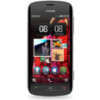Nokia 808 PureView User Guide - Page 95
Switch positioning methods off, Save and share places, Save or view a place, Settings
 |
View all Nokia 808 PureView manuals
Add to My Manuals
Save this manual to your list of manuals |
Page 95 highlights
Maps 95 GPS A-GPS Wi-Fi Cell ID The global positioning system (GPS) is a navigation system that uses satellites to work out where you are. The Assisted GPS (A-GPS) network service retrieves location information using the cellular network, and assists GPS in calculating your current location. Your phone is set up to use the Nokia A-GPS service, unless your network service provider has its own A-GPS settings. To get the assistance data to your phone, you need to be able to connect to the internet. Your phone gets the data from the service only when needed. Wi-Fi positioning improves positioning accuracy when GPS signals are not available, especially when you are indoors or between tall buildings. With network (cell ID) based positioning, Maps locates you through the cellular system your phone is currently connected to. The availability and quality of GPS signals may be affected by your location, satellite positions, buildings, natural obstacles, weather conditions, and adjustments to GPS satellites made by the United States government. GPS signals may not be available inside buildings or underground. Do not use GPS for precise location measurement, and never rely solely on the location information provided by GPS and cellular networks. Depending on the available positioning methods, the accuracy of positioning may vary from a few yards to several miles. Switch positioning methods off To save on data costs, especially when abroad, you can switch off assisted GPS (AGPS), Wi-Fi, or network (cell ID) positioning. 1 Select > Settings. 2 Select Application settings > Positioning > Find my location > Positioning methods, and switch off the positioning methods you don't want to use. Working out your location may take much longer, the location can be more inaccurate, and the GPS receiver can lose your location more frequently. Save and share places Save or view a place To aid your travel planning, you can search for places, such as hotels, attractions, or gas stations, and save them to your phone.















